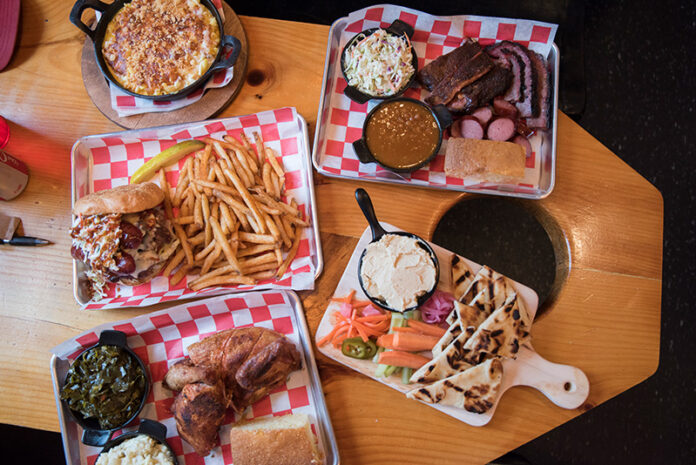Dan Sauer and Wenonah Madison are busy. The couple operate their year-round, always bustling 7A in West Tisbury — home of the famous Liz Lemon sandwich. They are in their third season at Sea Smoke, a funky-casual authentic wood-smoked BBQ seasonal restaurant on Oak Bluffs’ Oakland Avenue, across from Tony’s Market. I checked in with Dan to see how he feels about cooking with wood, and updates on the 2019 season.
Before opening Sea Smoke, did you have a lot of experience cooking with wood?
I’ve smoked meats and veggies, mostly on a smaller scale, working with wood chips and pellets.
Now I am smoking meats in a large outdoor wood-fired BBQ pit called the Oyler Pit. It’s made in Texas. The pit is able to produce 500 to 700 pounds of meat over 24 hours of smoking.
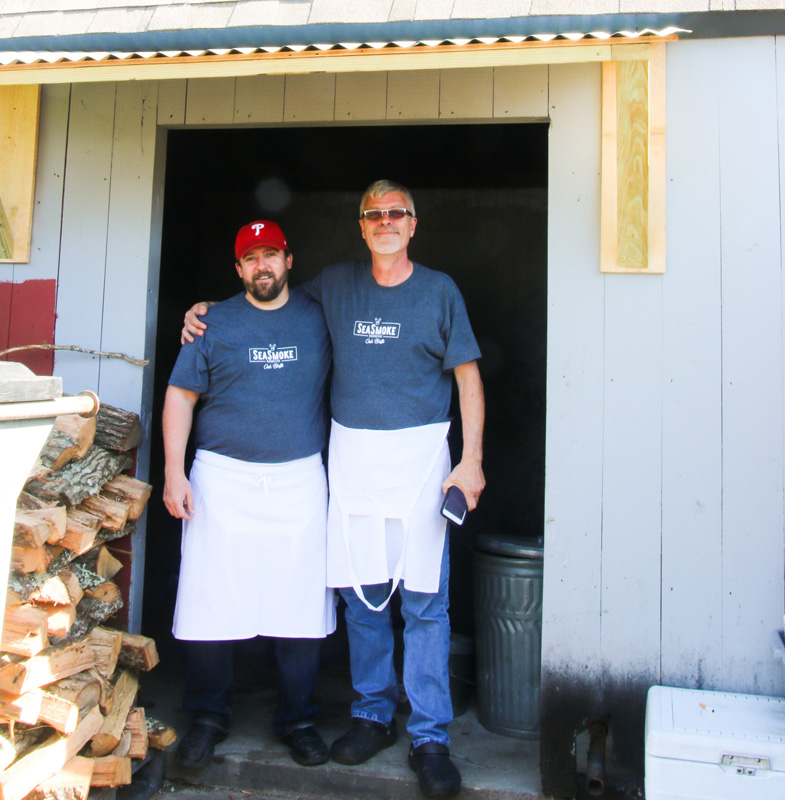

What do you like about cooking with wood?
I love the end product of the meats you get working with wood. Because of the slow process, you are getting meats that are tender, juicy, with natural wood flavor. You will not get that flavor cooking with just gas.
What are the challenges of cooking solely with wood?
The challenge is wood. Though the end result is great, you need to carefully curate your wood. There is no assist or backup, like with gas; if the wood fails by going out, or burns too slow or too fast, you lose your product. I smoke beef brisket 12 to 16 hours overnight at 250°. The wood needs to burn steady, slow, and consistently. The temperature runs at 225° for chicken, pork butt, sausage, and pork ribs.
What kind of wood do you smoke with?
I use mostly use oak, sourcing locally on the Island and in the region. Sometimes I will add some cherry or maple. I buy two stages of oak: well-seasoned, which I use to start the heat and create a good bed of coals, then I continue the smoking process with green oak that has more moisture and slows the fire and smoking process.

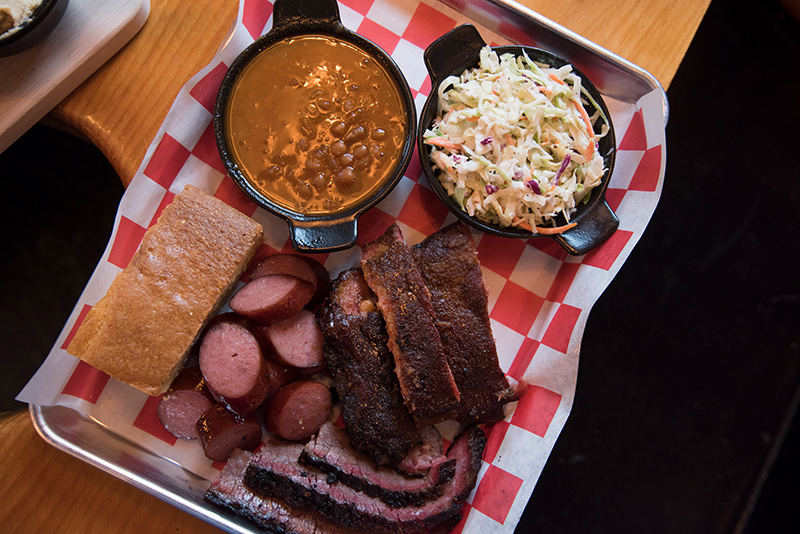

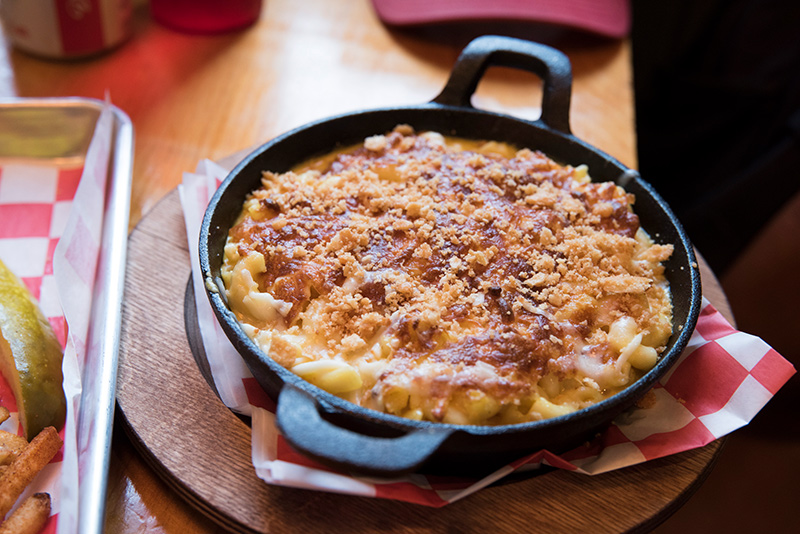
Any changes this season at Sea Smoke?
We are switching things up, adding full service. In the past, it was more of a cafeteria style and takeout. The service experience creates more face time with customers, more time to talk about our food and the local beers we serve. We’ve also added a few more menu items, including appetizers, burgers, and desserts. We are partnering with J.B. Blau, who will be managing the front of the house, while I run all the food operations.
On your one day off, where do you like to escape to?
I like to revel in the chaos of my home with Noni [Wenonah] and our kids.
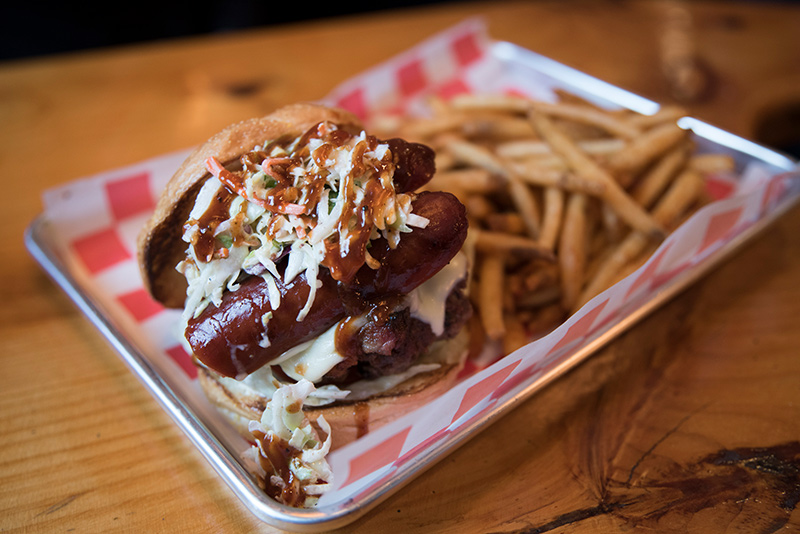
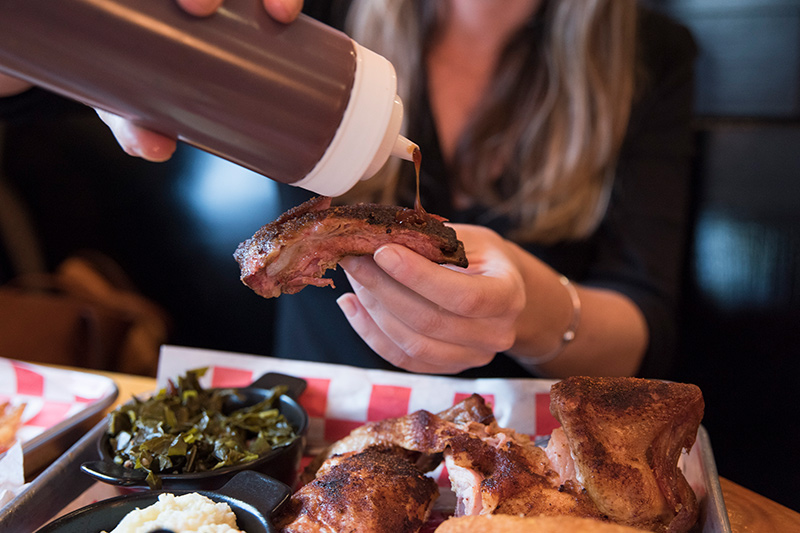
Barbecue Baked Beans
3 lbs. dried Great Northern beans (Soak overnight in cold water at room temperature) 1 large Spanish onion, diced small 6 cloves garlic, minced Olive oil as needed 2 cups ketchup 1½ cups barbecue sauce 1¼ cup brown sugar ¼ cup yellow mustard 2½ Tbsp. cider vinegar 2½ Tbsp. hot sauce ¼ cup barbecue dry spice rub
Preheat oven to 300°F.
In a large sauce pot, saute onions in olive oil until slightly brown. Add garlic, combine and cook about one minute. Add beans and fresh water covering beans over one inch. Bring to a boil. Add remaining ingredients and combine well. Transfer to an oven-proof pan, cover and bake for 2-3 hours until beans are tender. Remove cover and continue cooking until liquid thickens up and darkens.
NOTE: These beans can be made with bacon or fatback, For this recipe dice ½ lb bacon or fatback and cook until crispy and fat is rendered. Remove meat and use this fat instead of olive oil to saute onions and garlic. Combine bacon or fatback into beans before baking.
















